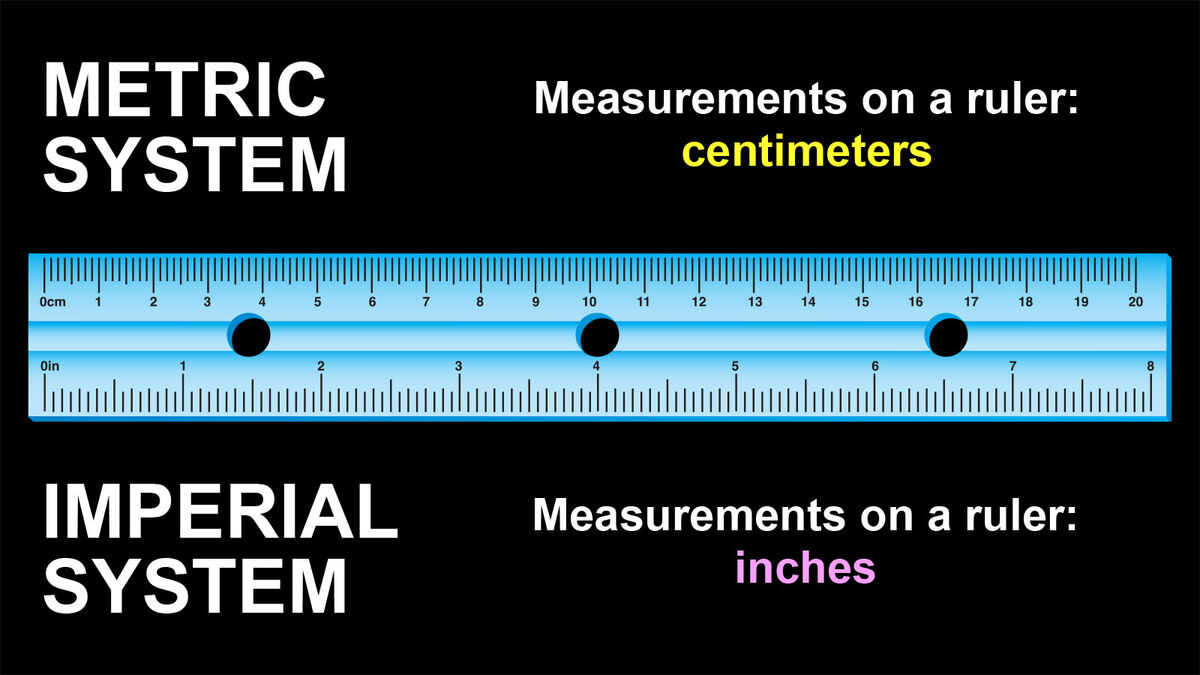
The imperial system and the metric system are two different measurement systems for things like distances, volumes, and weights. Since all countries in the world don’t use the same measurement system, it’s important to understand both.
What Is the Metric System?
The metric system is defined as:
“A decimal system of units based on the meter as a unit length, the kilogram as a unit mass, and the second as a unit time.”
Today, it is commonly referred to as SI, which stands for the Système International. It is also known as the International System of Units.
Countries Using the Metric System
All but three countries in the entire world use the metric system of measurement. Some of the major countries using the metric system include:
- Australia
- Canada
- France
- India
- Italy
- Japan
- Mexico
- South Africa
- Spain
- United Kingdom
What Is the Imperial System?
The imperial system is defined as:
“A system of measurement in use in the United Kingdom and other Commonwealth countries consisting of units such as the inch, the mile and the pound (a unit of weight).”
The British Imperial System
The British Imperial System was the official weights and measures system used in Great Britain from 1824 to 1965. The system developed as a way to unite the country by having a single measurement system rather than the many local measurement systems.
The United States Customary System
The United States Customary System (USCS) was based on the British Imperial System, and many use the term “imperial system,” or IS, to describe both of these systems today.
Countries Using the Imperial System
So many countries use the metric system, it might leave you wondering, “Who still uses the Imperial system?” Only three countries in the world use an Imperial system of measurement:
- Liberia
- Myanmar
- United States of America
Why Doesn’t the U.S. Use the Metric System?
When the USCS was created, the metric system was not as widespread as it is today. Since all industries in the U.S. were set up using this measurement system, it would take a lot of time and money for businesses, manufacturing plants, and the country’s infrastructure to change course. Switching an entire country to the metric system can take decades.
While the U.S. doesn’t officially use the metric system, it is widely taught in U.S. schools, and many measurement tools include both IS and SI units. U.S. packaging for commercial products is also mandated to show net quantities in both SI and USCS units.
Main Differences Between Metric System and Imperial System
While the main difference between the metric system and the imperial system is the type of units used, there are a few other key differences.
- The metric system is based around the unit of measurement called the meter.
- The meter was created using the earth’s circumference as it runs from the North Pole, through Paris, France and to the equator.
- Metric units easily convert by multiplying or dividing by powers of 10.
- There is no straightforward way to convert imperial units.
Fundamental Units Comparison Chart
The names and sizes of the measurement units used in each system are mainly what make them different. These are some of the units used for different measurements in each system.
Measurement | Metric Units | Imperial Units |
long length | meter/metre | mile, yard |
short length | centimeter/centimetre | foot, inch |
mass/weight | gram | ounce, pound |
volume (liquid) | liter/litre | gallon, pint, quart |
volume (dry) | liter/litre | bushel, peck, pint, quart |
Is the Metric System Better Than the Imperial System?
You could argue that the metric system is better in today’s world because it is an almost universal standard that is understood no matter where you are. The metric system is also easier to use because of the way all measurements relate to each other. However, if you’re used to using the imperial system, you could argue it is more familiar and therefore easier to use.
Metric System vs. Imperial System Conversion Charts
If you need to quickly convert metric units to Imperial units, conversion charts are the easiest way.
Measurement Conversions for Area
Here are some common area conversions for metric units and Imperial units:
Metric Units | Imperial Units |
0.405 hectare | 1 acre |
0.093 square metre | 1 square foot |
2.590 square kilometres | 1 square mile |
Measurement Conversions for Length
If you’re measuring length or distance, these are common unit conversions:
Metric Units | Imperial Units |
30.48 centimetres | 1 foot |
1 centimetre | 0.39 inches |
2.54 centimetres | 1 inch |
1.609 kilometres | 1 mile |
0.9144 metre | 1 yard |
1 meter | 39.37 inches |
Measurement Conversions for Liquid Measures
When you need to measure liquids, you can use these conversions:
Metric Units | Imperial Units |
1 litre | 33.814 ounces |
3.785 litres | 1 gallon |
29.573 millilitres | 1 ounce |
0.473 litre | 1 pint |
0.946 litre | 1 quart |
Measurement Conversions for Weight/Mass
If you’re measuring the weight or mass of something, here are some common unit conversions:
Metric Units | Imperial Units |
0.454 kilogram | 1 pound |
1 kilogram | 2.2 pounds |
1 gram | 0.035 ounces |
28.350 grams | 1 ounce |
0.907 metric ton | 1 short ton |
Measuring Up
Now that you have a basic understanding of the metric system vs. the Imperial system, you can learn more details about each. Explore metric system prefixes to see how you can easily understand metric units, then discover measurement abbreviations for common measurements.